During the warmer months of the year, many readers and viewers ask us for advice about summer suits and outfits. Interestingly, most men think about cotton or linen fabrics first.Also, the lightness of the fabrics seems to be the number one criterium, but these are only two aspects of warm weather menswear. Therefore we created this guide where we explain what to look for in hot weather clothing.
Also make sure to read and watch our guides on summer sport coats and men’s summer shoes, because they are all connected.
Characteristics of a Summer Suit
Although a summer suit needs more than just one characteristic in order to be worn comfortably, the most important aspect is neither weight nor the choice of material – it is breathability.
High Breathability Due to Loose Weave & Lack of Lining
When it is hot, you definitely want to feel every breeze coming your way, and the best way to do so is with an open-weave fabric. Loosely woven Panama, a basketweave fabric, is usually popular in summer and achieves the desired cooling effect.
When you hold a piece of this fabric against the light, you can see through the weave of the cloth, even it if is dark navy. If the fabric is a heavier weight, it will also keep you cooler than a featherweight cotton fabric that is tightly woven.
Use A Fan To Determine Your Suits’ Breathability
To test how breathable your suit is, stand about 3-4 yards / meters away from a fan. If you can feel the air, it’s breathable, if you can’t feel it, there is a better fabric to be found. Once you have worn a breathable garment in the wind, you know that it feels chilly in fall or early spring, but during the summer you want to feel the maximum breeze.
Patterns Help
The more open the weave, the more patterned your fabric should be to keep it from becoming see-through. However, bear in mind that lighter colors are better than darker ones since light-colored cloth reflects the sunlight whereas dark cloth absorbs it, making you feel warmer.
Even if you go for solids, a mottled color as you may know it from Flannel or Fresco is better than a plain color.
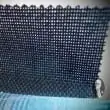

Also, you want to make sure that you get at least a half-lined jacket because, again, the finer weave of the lining will decrease your garment’s ability to breathe.
Half-lined denotes that the back does not have any lining except for the top, and fully unlined usually means that there is no lining except in the sleeves.
In southern Italy, you can find suits without sleeve lining for maximum coolness. However, your sleeve may not always look as nice because your shirt sleeve sticks to the suit sleeve and can restrict movement. Hence, a sleeve lining is a good idea unless you live in tropical climates.
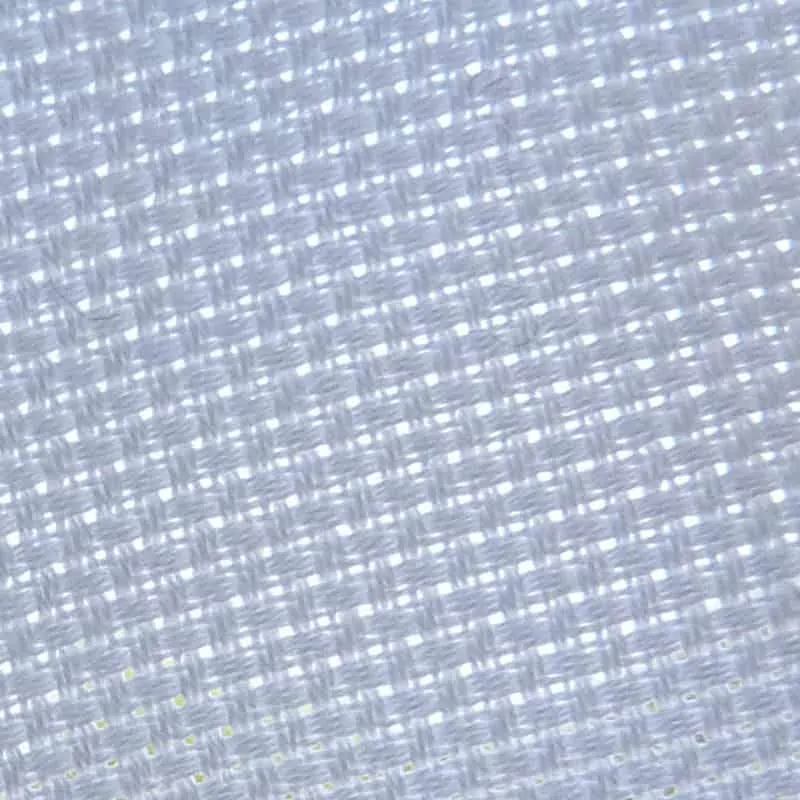
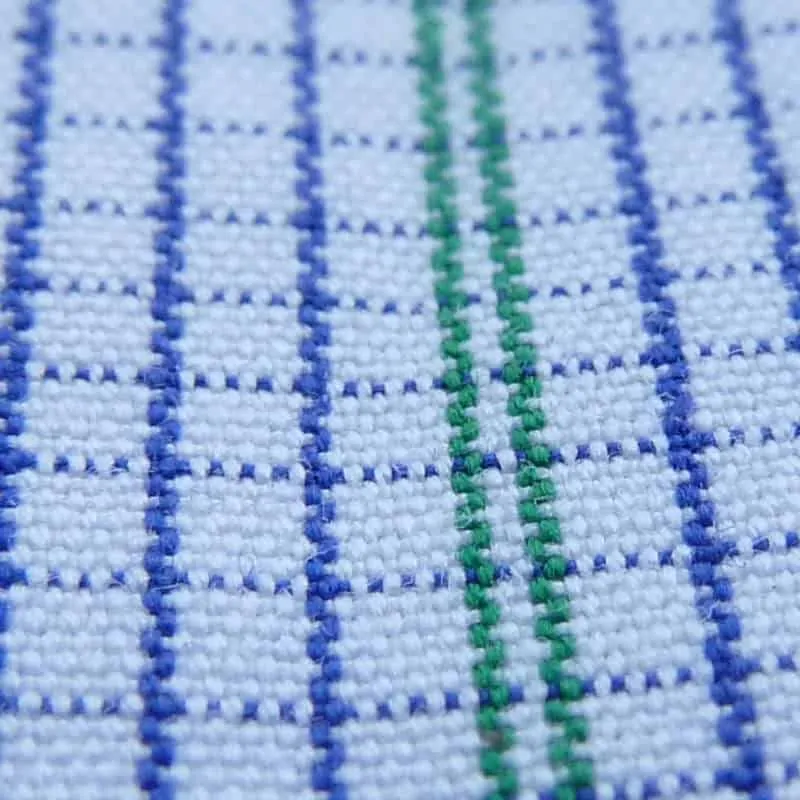
Light Weight Fabric
Once you have settled on an open-weave, you can turn to choosing the weight of your suiting fabric. Fortunately, modern high-quality fabrics have a beautiful finish, and although the drape is not perfect, they are still the way to go. 7 ounces (210 grams) summer fabrics usually have very open weaves and you should seek out specific summer fabrics for summer suits, because even though some fabrics may be lightweight, the weave may be too dense for summer.
Tropical Worsted Wool – The Summer Standard
A popular summer fabric choice is Tropical. Basically all big mills offer their take on it, and it is simply an open weave worsted wool fabric. It’s generally softer than fresco but also not as breathable. Overall, it is a good choice, but if you want increased air flow you have to go with something else.
Fresco – The Hot Weather Wool
Another great summer suiting fabric is the Fresco fabric, which I already described in more detail in our Fresco article.
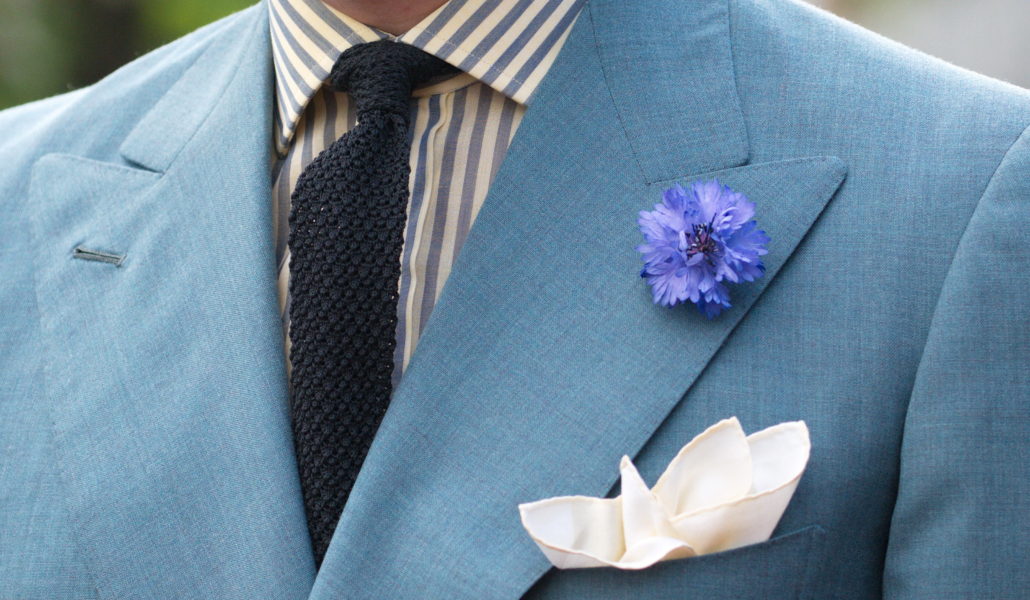
Linen for Summer?
Linen is a classic summer fabric because of its light weight, open weave and casual fabric structure. It is usually a little coarser than fine merino wool or cotton fibers., and it wrinkles graciously. After a day wearing a linen suit, you will appear anything but dapper, although some people like this nonchalant look during the summer. In my opinion, a linen suit is ideally suited for a vacation on Capri or casual events, but it is not a good choice for office wear. If you nevertheless want to wear linen at the office, try to find some blends with cotton or even silk. They will still have a beautiful casual look and feel without the wrinkles.
After a day wearing a linen suit, you will look a bit wrinkled but in a sophisticated way. For the office, you need to be able to pull it off because many people will just think it is a wrinkled suit.
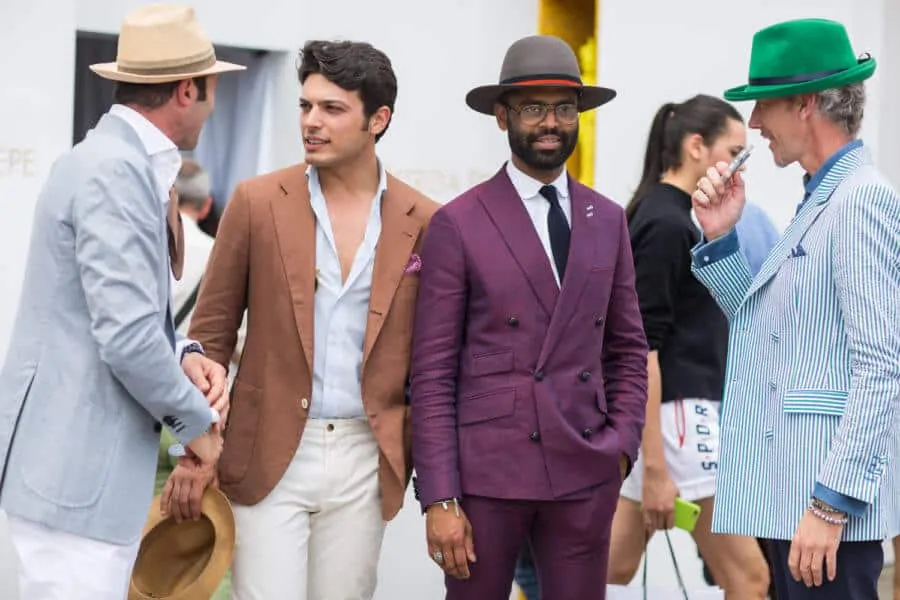
Classic linen summer suit colors include tobacco brown, beige or khaki tones, but you can also go with blue. If you go with the latter, be sure to get a lighter shade of blue than you would for a wool business suit because it underlines the summer character. If you want to do something special, you can also opt for unusual colors such as this inspired sky blue linen suit.
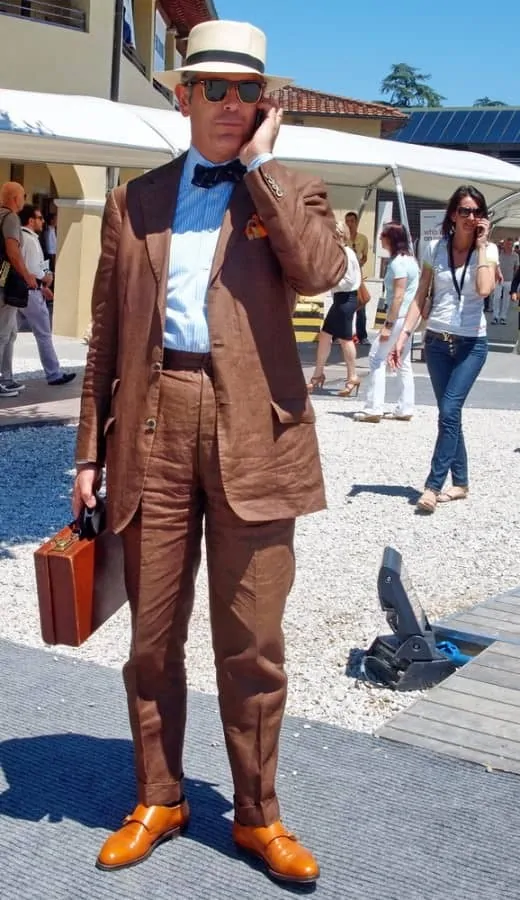
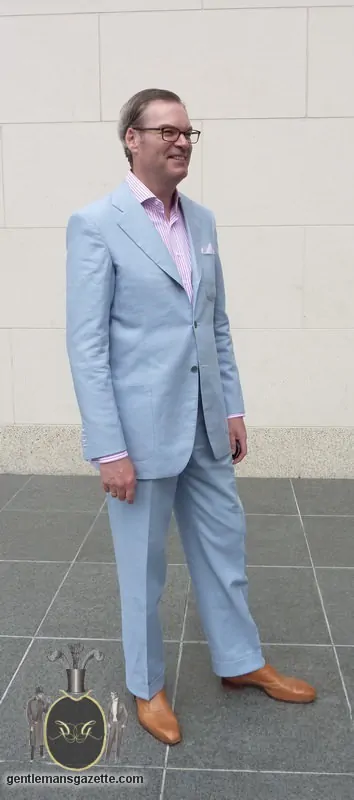
Summer Cotton
For most men, cotton seems to be a default choice during the summer. Now, there is a lot of cotton on the world market, but there are huge differences in terms of fiber length and thickness. In regard to summer clothing, the weave is more important. For example, khaki colored twill trousers or fine “summer” corduroy are not desirable since they impede air circulation. Instead, try to look for open weave poplin fabric.
If you cannot see through the fabric when holding it against the light, it is not well suited for warm summer weather.
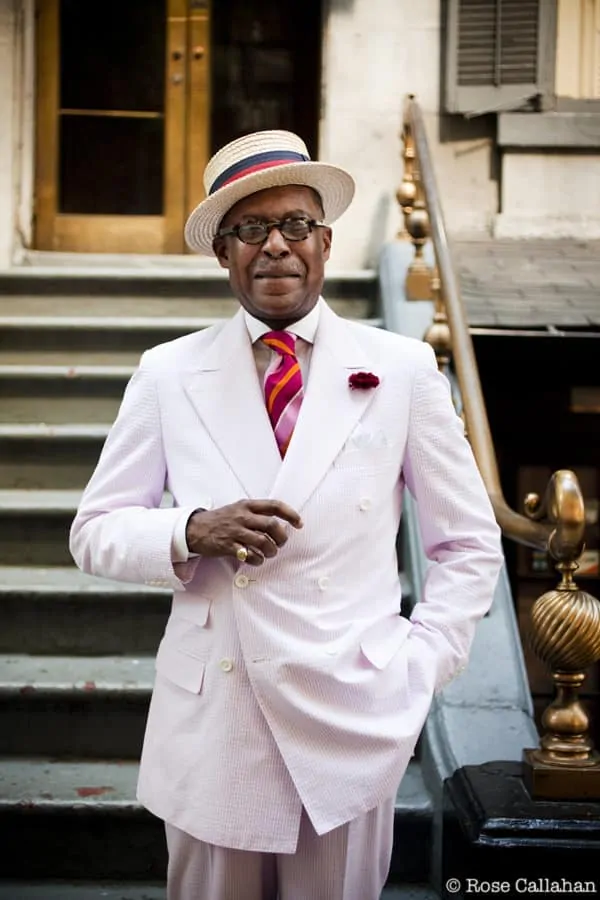
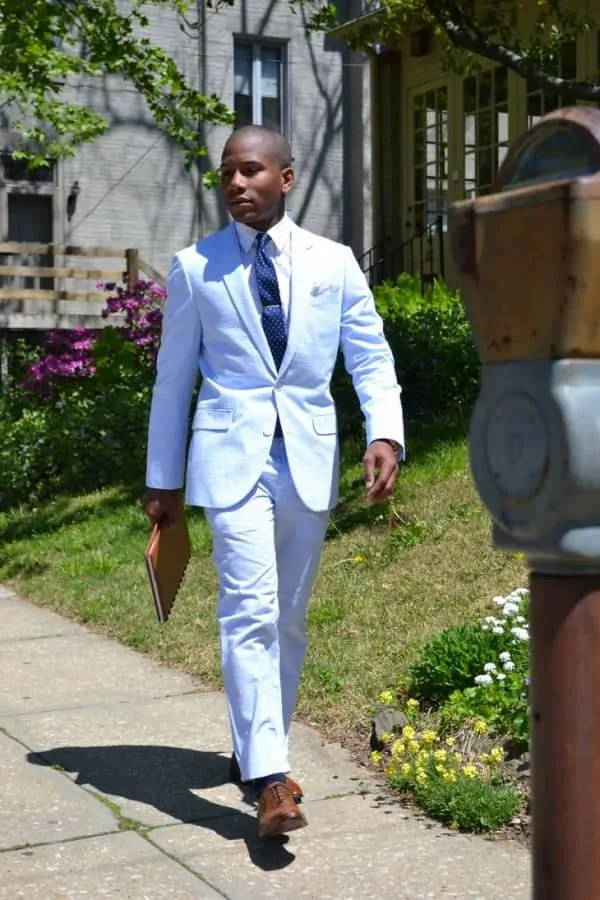
Seersucker
Seersucker is a summer staple that seems to be particularly popular in the US, and you can learn all about it in our designated seersucker guide here.
However, the fabric has its roots in India. At the time the country was ruled by the Mughal, Persian was the official language at court. Consequently, a lot of Persian was integrated into the local languages and then shaped both the Urdu and Hindi languages. As such the term seersucker derives from these languages referring to the dual tonality of the colors. In fact, “sheer” means “milk” and “shukkar” means “lesser refined brown cane sugar.” Over time, the word evolved into “seersucker,” and it was first imported to Europe in the 18th century. It is not clear what material it was originally made of; some say linen, while others claim it was a blend of cotton and linen. In any case, it is a puckered fabric and its special texture is achieved by pulling certain warp yarns tightly, while others are left looser. As such, the crinkling effect is permanent and as a result, no ironing is required. Supposedly, the crinkling is supposed to help air circulation, although I doubt that.
In the US, it was first popularized in the South, and originally it was considered to be the poor man’s linen suit. However, after WWII it became socially accepted as a proper summer suit. Although the seersucker suit consisted originally of pants, a vest, and a coat, it is now generally worn without the vest. In hot climates, the extra layer of cloth is really not necessary, although it looks better.
Silk & Cashmere
Sometimes you will see blends of cashmere and silk advertised for summer clothing. Personally, I think these two fibers are better suited for cooler climates. Silk is mostly woven very tightly and has excellent insulating properties, which rules it out as a summer contender. Cashmere is also very soft but simply too warm for hot summers.
Cut of a Summer Suit
If your number one objective is to stay cool, wear single breasted coats only without a vest. If you want to be more unique, you can go for a double-breasted seersucker in pink, and if you want to be avant-garde, get a vest to go with it, and you will most likely never see anyone else wearing such an ensemble!
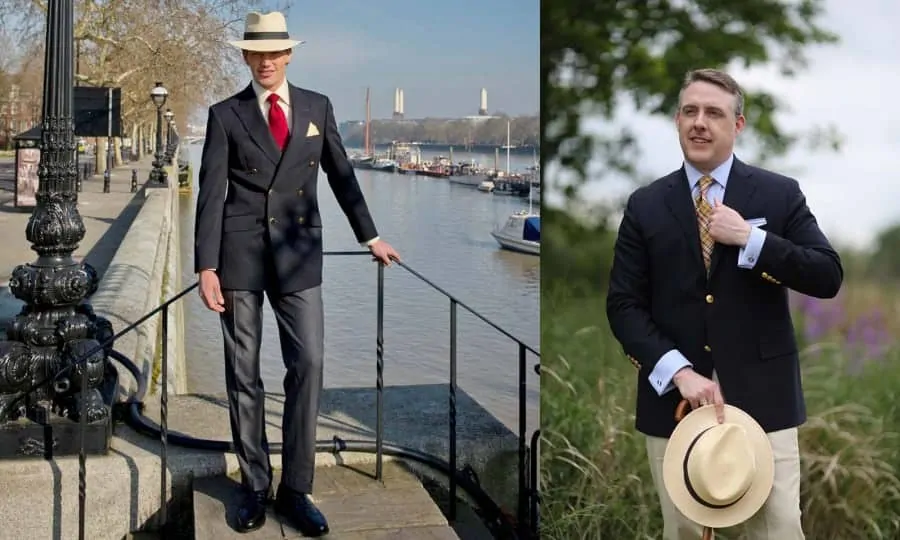
Summer Suit Accessories
To protect yourself from the sun and look put together despite the soaring temps, you should make sure to wear the right summer accessories with your suit. For shirts, I suggest cotton with an open weave, and while short socks may be cooler, a gentleman wears over-the-calf socks, because it is thoroughly inelegant to reveal one’s hairy calf when wearing a suit.
A Panama hat or any other straw hat such as a boater will keep your face in the shade. Sunglasses protect your eyes from UV rays, and if you chose polarized aviators, things around you look even prettier.
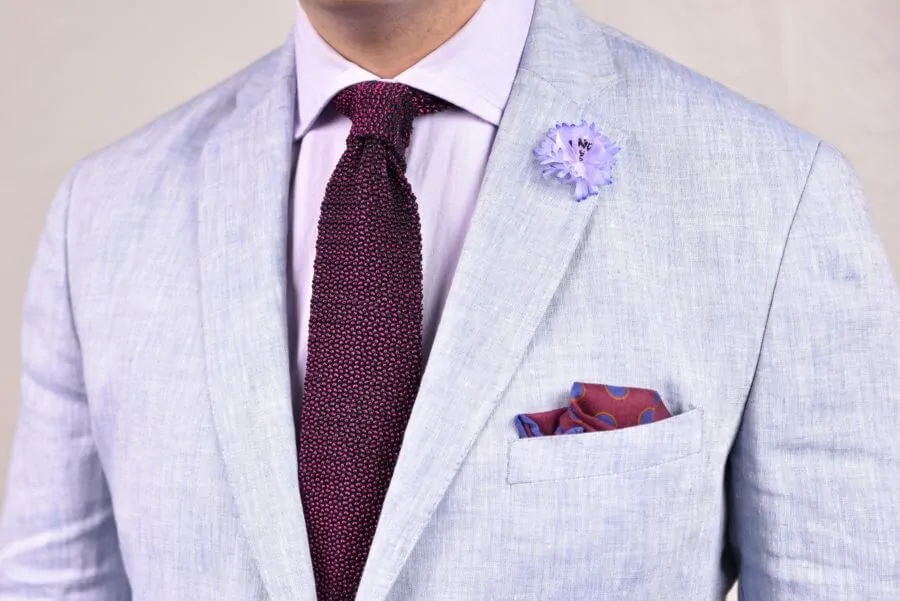
In regards to neckwear, knit ties are great because they underline the casual character of the rest of your outfit and they are more breathable than regular ties. Linen ties are an alternative but just like the suit, they will wrinkle (ironing ties is never a good idea unless you rip it apart, iron it and sew it back together).
Also, bow ties are great because they do not cover your chest. For a selection of summer ties and bow ties take a look here.
Shoes should be in lighter colors. Suede, Saddle shoes and two-tone shoes such as spectators are equally as good as loafers or canvas shoes; it all depends on the degree of elegance you are going for. Check out our summer shoes guide for more details.
What do your summer outfits look like? What is your favorite summer wardrobe staple? Let us know in the comments!
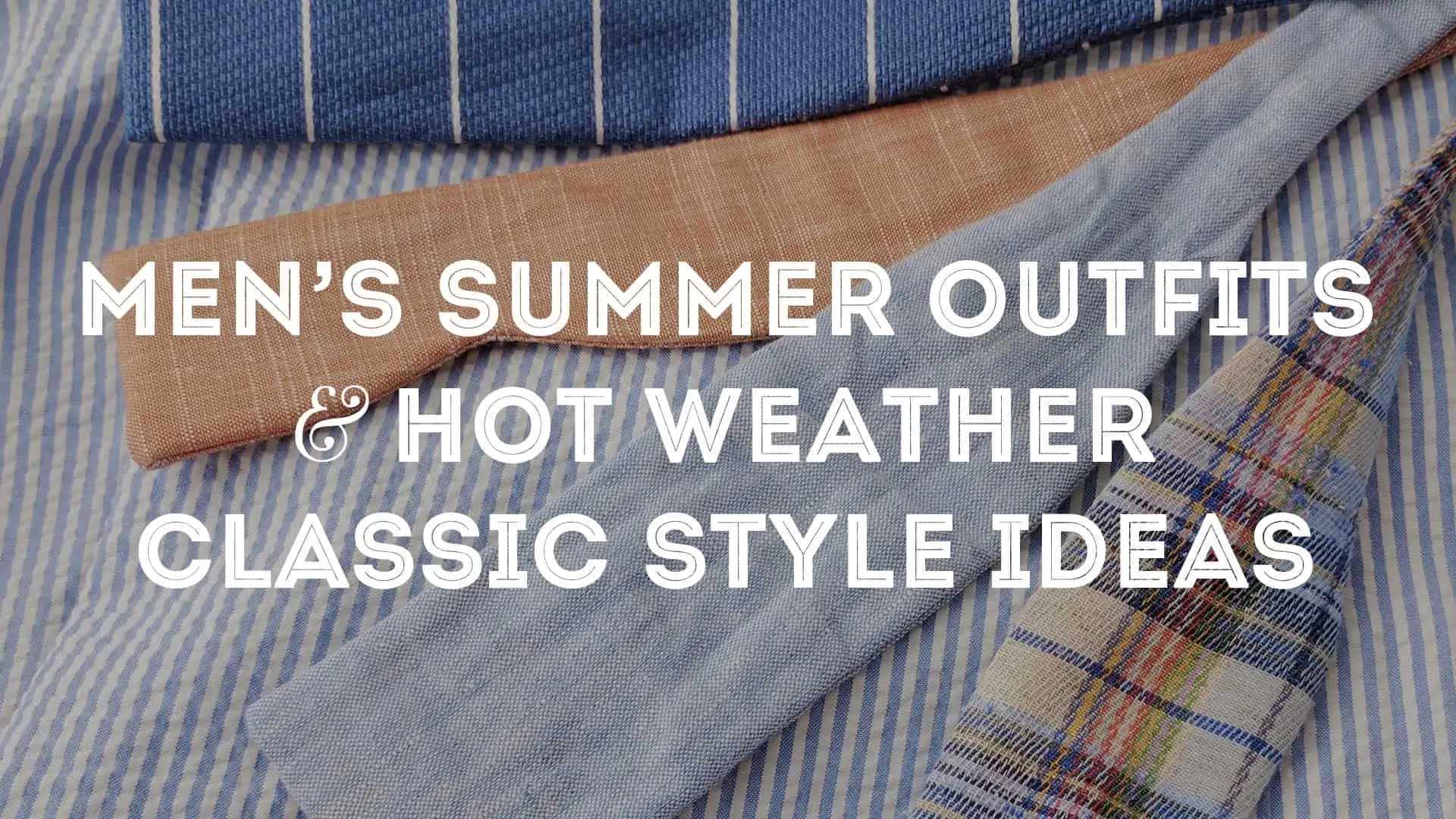
Could not have agreed more … one may wish to add the spectrum of colours better suited under the sun.
And you are absolutely spot on with the origins of the term “Seersucker”. However it is an Urdu / Persian derivative rather than Hindi (which predominatly relies on sanskrit as its base and then borrows from Urdu, Persian and Arabic on account of the Muslim regime cultures)
In fact it is “Sheer” which means “milk” and shukkar” which is “lesser refind brown-coloured cane sugar”. So the two-tonal effect as well as weave and texture are pretty much encompassed.
Dear Sajeel, I added your information to the text, and I will get back to you when I am writing the article about seersucker. Thank you!
Dear Sajeel, thank you for this most informative comment. I will try to add it to the article. Are you sure that there is not a similar word in Hindi?
There is no similar word in Hindi – this is Persian
I do stick with linen, even in the office. I’m the only one who wears a coat, so I doubt the IT people in their Iron Maiden t-shirts are caring that I’m wearing a less formal type clothing.
I did have a silk, linen, wool blended coat just made, and I have high hopes it will work. Unlined (except for the sleeves). It hasn’t reached blistering hot, yet, here in Southern California so time will tell.
Thanks for your comment Turling, in a t shirt environment, a linen suit really stands out in a positive way, no matter how many wrinkles it has. Let us know how you like your linen silk blended coat.
Absolutely … and from a puritanic stand point, it will have to be persian.
You see the Mughal rulers were from the Central Asia and Persian was therefore the official / court language in the subcontinent that we now know as Pakistan and India. Therefore a lot seeped into local languages and shaped both Urdu and Hindi the way we identify them today.
A wonderful guide! I’ve bookmarked it for future reference. I especially love the Seersucker, I’ll be sure to go out and hunt one down.
Thanks Roger, I am glad you like it and don’t forget to sign up for our newsletter.
Thanks for the summer fashion tips to keep cool. It seems like even if you have to wear a suit you have some options available.
You are welcome.
It’s a very fine article indeed. The different suiting fabric options makes everything appear so lucid and simple. Now, I know the perfect choice for my suit. Thanks.
Dear Mr. Sharma, thanks for being one of the people who inspired me to write this post.
My pleasure.
I would simply like to first of all start out by saying that I have just only recently become a member of your newsletter and I truly and sincerely enjoy every article I have had the opportunity to read.
I find them most enlightening and imformative it’s wonderful to see that there are “Gentlemen” still in this world that greatly appreciate the fine art of dressing.
To both you and your staff keep up the great work and may you continue to provide your readers with pertinent and truly valuable fashion information.
Regards,
Park Jacob Weatherby
Congratulations on your excellent web site.
I wonder if you might be able to offer me some advice. I am getting married in Monaco next year in the height of summer. I would like to wear my morning coat but would die of heat exhaustion; even a new lightweight coat would probably be insufferable. I cannot abide “modern twists” on traditional dress but are there any suitable alternatives?
Any advice would be most welcome.
How much longer can you postpone the wedding? Raphael should be ready to reply soon – his yearly moan about Royal Ascot is overdue